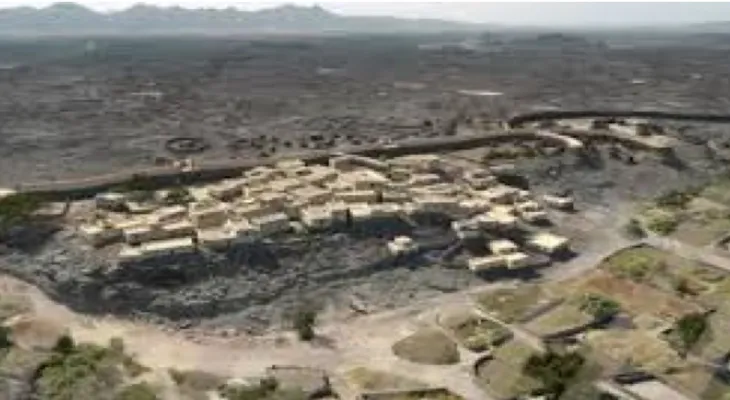Search here
Newspaper
Search here

Arab Canada News
News

Published: November 3, 2024
Researchers have announced the discovery of a fortified city that is 4,000 years old, hidden in an oasis in Saudi Arabia, revealing how life transitioned from a nomadic lifestyle to urban living during that era.
The city, named "Al-Natah," had been long hidden behind the Khaybar oasis, a green spot surrounded by desert in the northwestern Arabian Peninsula.
According to the study led by French archaeologist Guillaume Charlo, a wall measuring 14.5 kilometers was found at the site.
In a new study published in the journal "PLOS One," a team of French and Saudi researchers provided "evidence that these walls are organized around residential areas."
The researchers state that the large city, which housed up to 500 inhabitants, was built around 2400 BC during the early Bronze Age, and was left deserted after about a thousand years, with the reason for this remaining unknown.
At that time, cities were developing in the Levant along the Mediterranean Sea, while northwestern Arabia was considered a barren desert.
However, the discovery of Bronze Age walls in the Tayma oasis 15 years ago prompted scientists to reconsider these areas.
The black volcanic rocks concealed the walls of "Al-Natah," preventing the site from being subjected to illegal excavation.
By monitoring from above, researchers were able to identify potential pathways and foundations of homes, which helped guide excavation efforts.
The discoveries revealed that the city spread over an area of 2.6 hectares, containing about 50 fortified houses.
Weapons made of metal such as axes and daggers, as well as stones like agate, were found in the graves there, indicating the presence of a relatively advanced community during that era.
The results of these studies suggest a slow urbanization during the transition from nomadic life to a more settled existence, where fortified oases may have been connected to each other in an area that was still inhabited by nomadic groups.
Although "Al-Natah" was small compared to cities in Mesopotamia or Egypt, researcher Charlo explains that this city represents "another path to urbanization" that differs from those cities or states, being "more modest and slow."
Comments